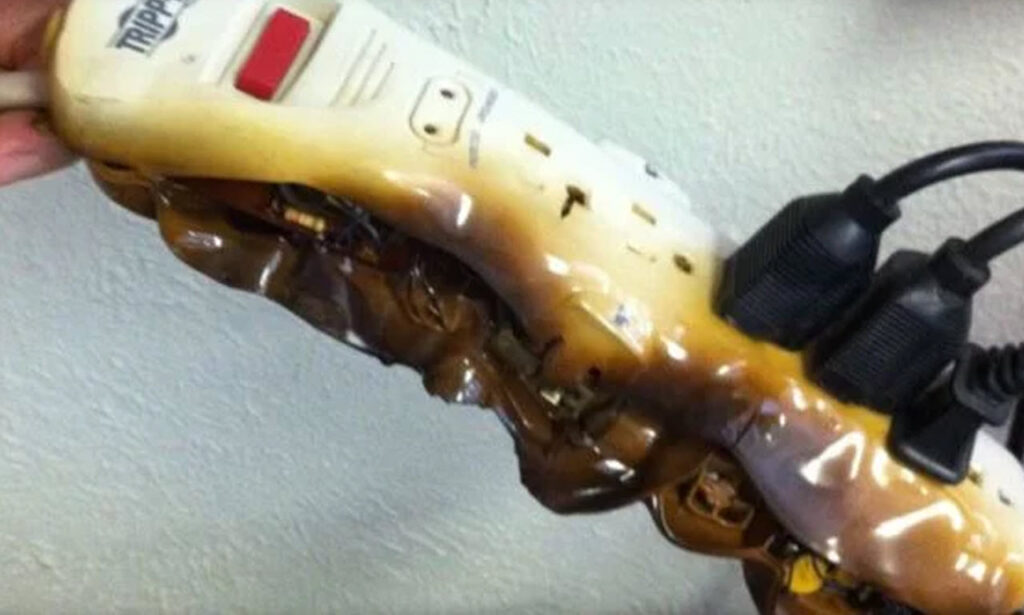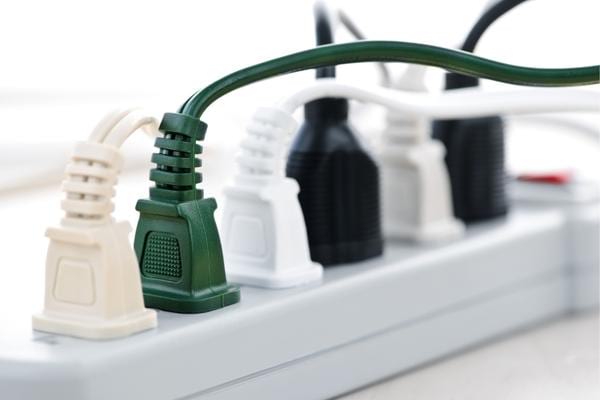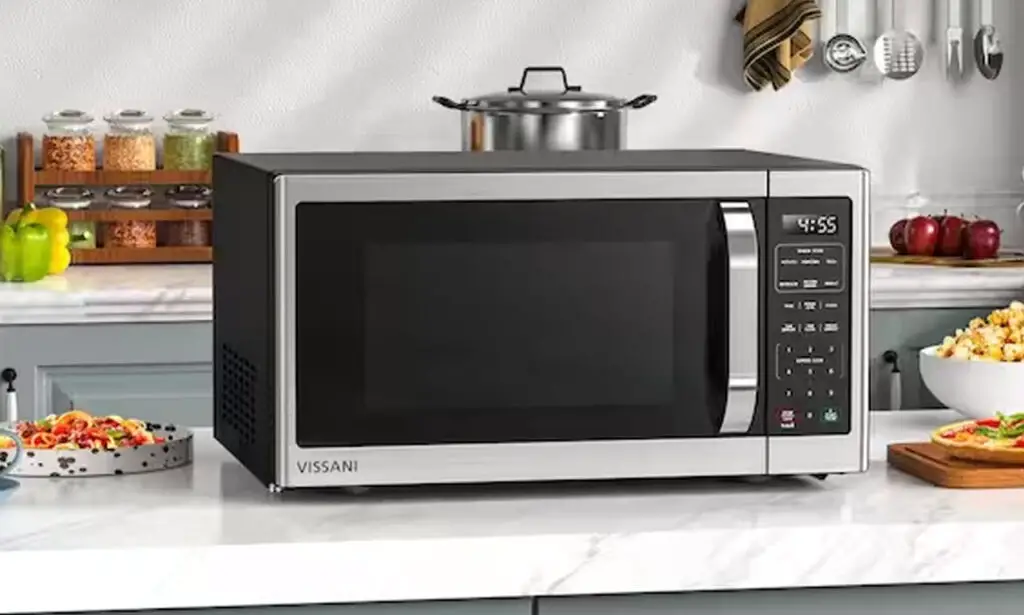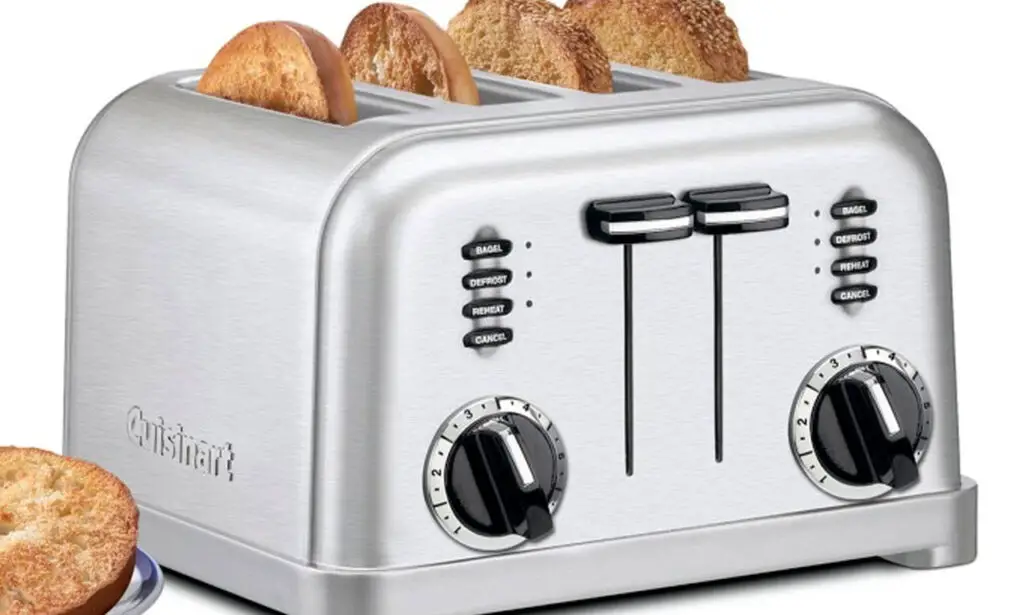
When we think of the past, one of the first thoughts that runs through our mind is how people lived without electricity. Nowadays, we can’t even imagine a day without it because all of our appliances and devices run on electricity.
The truth is, however, that most homes don’t have enough power outlets to keep everything running and charged, so most of us rely on power strips without being aware that appliances that consume a lot of energy become dangerous fire hazards when we plug them into a power strip.
Although power strips are the thing to go to when it comes to charging your phone or power an entertainment setup, there are certain devices that should never be plugged into a power strip.
Air conditioners, space heaters, toasters, and other appliances that use high wattage can easily cause power strips to overheat, which can easily lead to a fire hazard.

Even before plugging anything into a power strip consider the ammount of power they support. This is usually listed on the product itself.
High-capacity appliances need to draw a lot of power through an electrical circuit to work. Keep in mind that an appliance does not need to be large in size to draw large amounts of power.
Below is the list of appliances that should never be plugged into a power strip.
1. The oven: Even though the oven is not used continually, it is a power-hungry appliance that should not be plugged into a power strip. In fact, it should be plugged into its own wall outlet on its own circuit.
2. Refrigerator: Refrigerators require a lot of power and frequently cycle on and off which can easily overload a power strip and cause damage. Much like the oven, refrigerators require a wall outlet dedicated solely to powering the appliance.

3. Washing Machine: When turned on, washing machines pull a lot of power. This is the main reason why these appliances shouldn’t share a receptacle with any other appliance or device.
Most washing machines use a max of up to 1400 watts, putting it dangerously close to the max load of most power strips. On top of that while working, washing machines are usually left unattended and work longer hours, at least an hour, which is long enough for a power strip to overheat.
4. Heating: Portable heaters should never be plugged into a power strip because most of them use 1,500 watts of energy on their high setting and they usually run for extended periods of time.

5. Microwave: Since they consume a lot of energy when used, most microwave ovens are plugged into their own receptacle and that is always a good practice.
6. Coffee Maker: Those who own a coffee maker are not fully aware of the power these appliances use, and this is why they should never be plugged into any sort of power strip or extension cord.

7. Toaster: You may think that browning up slices of bread or bagels doesn’t require a lot of energy, but the truth is that toasters use a lot of energy when in use and they should be plugged directly into the receptacle rather than a power strip.
8. Another Power Strip: Power strips are not meant to be used in conjunction with another power strip, although many people do exactly that. This, however, violates most safety codes because it can easily lead to overloading the electrical system.
9. Electronics (Computer, TV, Router): These types of electronic devices don’t necessarily use a lot of power on their own, but they are sensitive to surges and you can find yourself with a burnt out computer or TV very quickly if you plug them into a power strip.
If you want to protect these sensitive devices from power surges, opt for a power strip that functions as a surge protector.
WATCH: “The Five” Heats Up as Tarlov Critiques Trump, Faces Criticism from Gutfeld and Watters

Recently, on Fox News’ “The Five,” tensions flared during a segment discussing the presidential campaigns of Joe Biden and former president Donald Trump. Co-hosts Jesse Watters and Jessica Tarlov found themselves in a heated exchange when Watters offered his views on the Biden administration.
Watters highlighted various challenges facing Biden’s campaign, incIuding dissatisfaction among Americans with the current state of the economy. Additionally, he criticized Biden for seeking endorsements from cultural figures like Taylor Swift, characterizing it as a sign of desperation.
Referencing a New York Times report on Biden’s reelection strategy, Watters remarked, “Nothing to do with each other. I read this article in The New York Times, this is the Biden reelection strategy, are you ready? Don’t run on ‘Bidenomics’, leave the White House more than once a week, ask Bill and Barack to raise money for you and hope a pop star endorses you. Jessica, this is not the reelection strategy of a winning campaign.”
In response, Tarlov brought up the E. Jean Carroll controversy invoIving Trump. She referenced a recent New York jury decision ordering Trump to pay over $83 million in damages to Carroll for defamation related to her se**al assault accusations.
Watters countered by expressing his desire for Swift’s endorsement, adding, “I love that you ignored what I just said. Because that was the news from the weekend on that side. And then Joe Biden was 15 minutes—“
The panel continued to spar, with TarIov pressing Watters on the Carroll case verdict. Trump, meanwhile, voiced his disagreement with the jury’s decision, stating his intention to appeal the case and criticizing what he perceived as a politicized legal system.
“Absolutely ridiculous! I fully disagree with both verdicts, and will be appealing this whole Biden Directed Witch Hunt focused on me and the Republican Party. Our LegaI System is out of control, and being used as a Political Weapon. They have taken away all First Amendment Rights. THIS IS NOT AMERICA!” Trump remarked regarding the legal proceedings



Leave a Reply